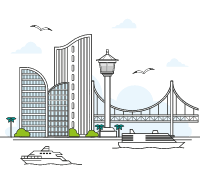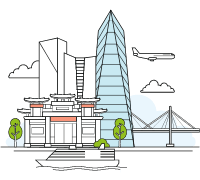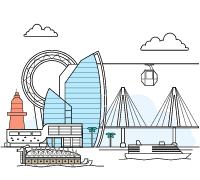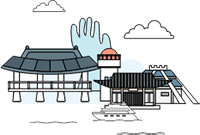
We recommend tourist destination near Sokcho Port International Cruise Terminal
We recommend tourist destination near Sokcho Port International Cruise Terminal
-
-
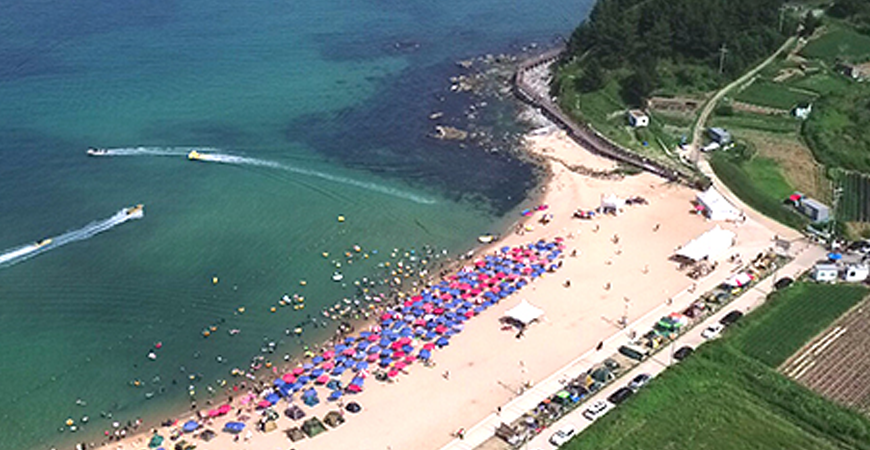 Sokcho BeachLink to page
Sokcho BeachLink to page
Sokcho Beach is a place where Sokcho citizens and tourists do not stop visiting. The Beach becomes even more enjoyable as a place for swimming in the sea as there are parks, flower paths, and pine forest trails. It is a 5-minute walk from Sokcho Express Bus Terminal. Sokcho Beach is close to downtown Sokcho and has convenient transportation. So, Sokcho Beach is a good place to stop by and enjoy the sea at any time, even if you are not necessarily swimming.
Photo by- From the Terminal
- 2.6km 5min
-
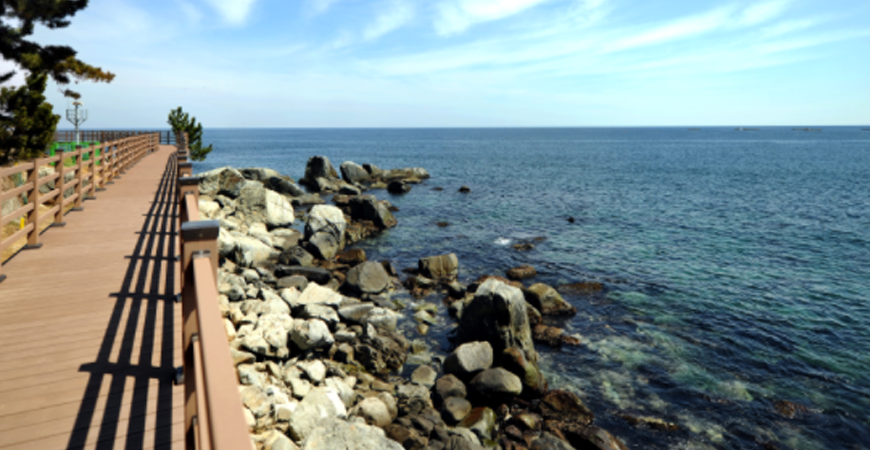 Sea Fragrance Trail(Badahyanggiro) Link to page
Sea Fragrance Trail(Badahyanggiro) Link to page
Badahyanggiro at Sokcho Oeongchi unveils the hidden wonders of majestic scenery of the past 65 years to the world. With a total length of 890m and 4 courses, enjoying the cool sea breeze and enjoying the unexplored views of the East Coast from the Bamboo Meditation Path, Sky Deck Path, Anbo Experience Path, and Rock Observation Path is a unique experience of Sokcho travel.
Photo by- From the Terminal
- 3.7km 10min
-
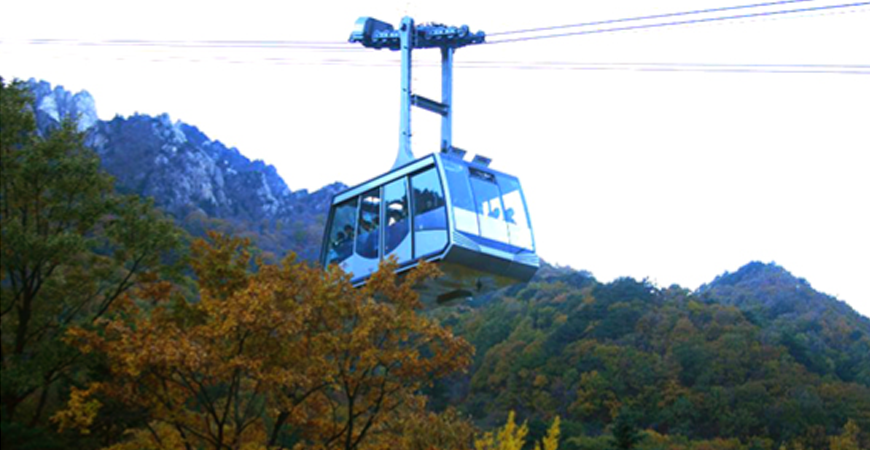 Seolarksan Mountain(Cable Car, Shinheungsa Temple)Link to page
Seolarksan Mountain(Cable Car, Shinheungsa Temple)Link to page
Shinheungsa Temple is located in Seoraksan Mountain, Seorak-dong, Sokcho-si, Gangwon-do. It was recognized as Gangwon Cultural Property Material No. 7 on June 2, 1984. The value of the Temple has remained intact to this day. In the 6th year of Queen Jindeok of Silla (1644), three monks Yeongseo, Yeonok, and Hyewon dreamed of the same dream and built a temple at the present site, and it was named ‘Shinheungsa Temple’ because it was built with a revelation from God.
Photo by- From the Terminal
- 14km 30min
-
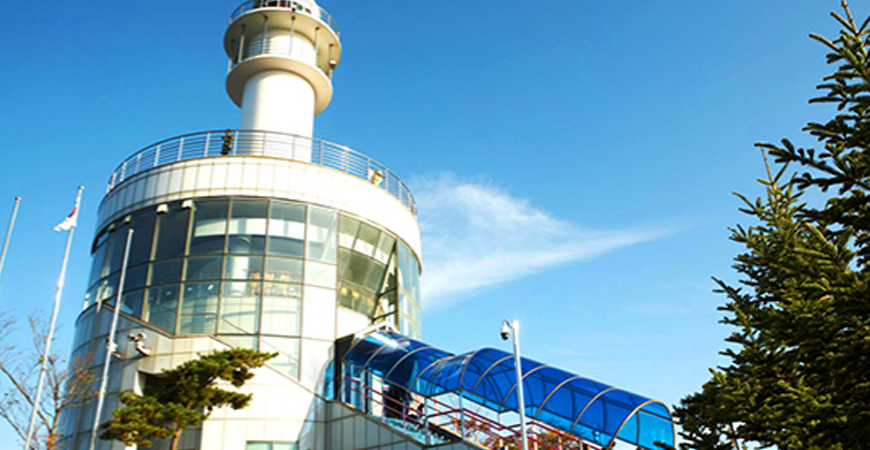 Area around YeonggeumjeongLink to page
Area around YeonggeumjeongLink to page
People who come to see Yeonggeumjeong at the end of Dongmyeong Port usually look for the pavilion built at the end of the overpass on the bedrock facing the sea. In fact, there is even a signboard called Yeonggeumjeong above the small pavilion.
Photo by- From the Terminal
- 4.3km 10min
-
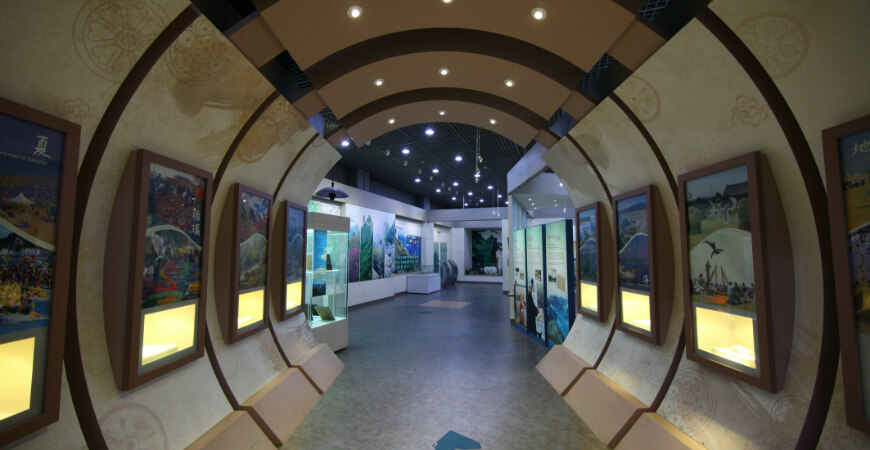 Sokcho MuseumLink to page
Sokcho MuseumLink to page
Sokcho is a city where Seolaksan-based mountain village culture, Donghae-based fishing village culture and refugee culture established after a lot of Korea War refugees took shelters coexist, creating a unique indigenous culture. Sokcho Museum and Refugee Cultural Village are the place where visitors can experience a unique folk culture as an area for feeling indigenous folk culture.
Photo by (Lee Beonsu)-KTO- From the terminal
- 8.7 km 20 min
-
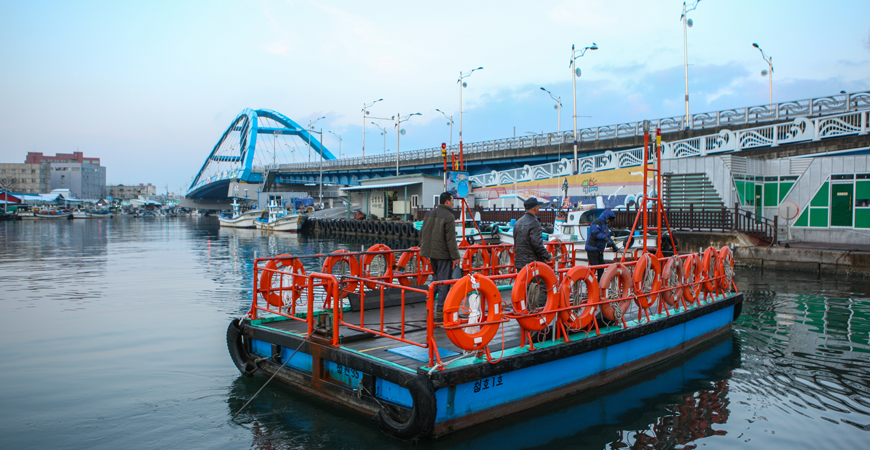 Abai Village Ferry ExperienceLink to page
Abai Village Ferry ExperienceLink to page
Abai Village Ferry(Gaet Bae) is the only transport between downtown Sokcho and waterway of Sokcho placed in btween Abai Village. Abai Village Ferry hangs two strands of long strip and fixates one ship each per one wire where sailor hangs hook on the wire and pulls it forward. Except for the senior and infirm, everyone on board should pull the hook and pass the waterway of Cheongcho lake.
Photo by (Kim Jiho)-KTO- From the terminal
- 5 km 15 min
-
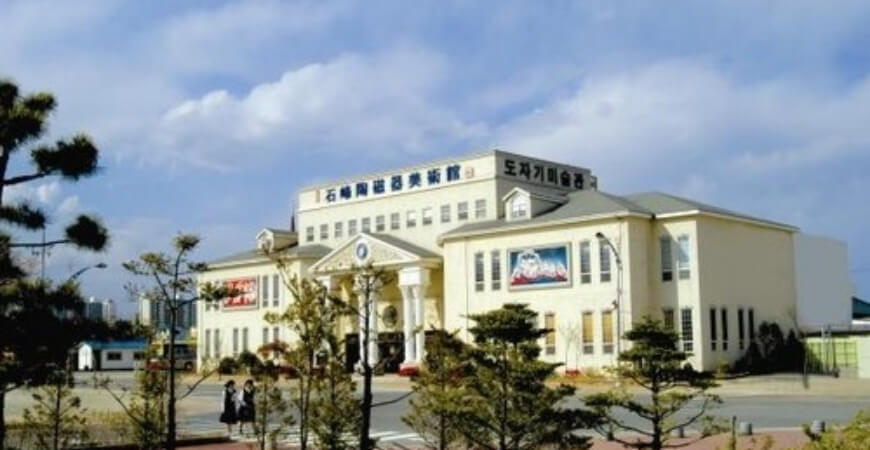 Seokbong Ceramic MuseumLink to page
Seokbong Ceramic MuseumLink to page
Seokbong Ceramic Museum is established in honoring the history of traditional Korean ceramics and reshaping ceramic culture that can go global. The museum brings together ceramic works of local and international artists, run as the place of observation and experience. The museum holds 1,103 pieces of collection that went through national deliberation. You can make your own ceramic at experiential class room.
Photo by- From the terminal
- 4 km 10 min
-
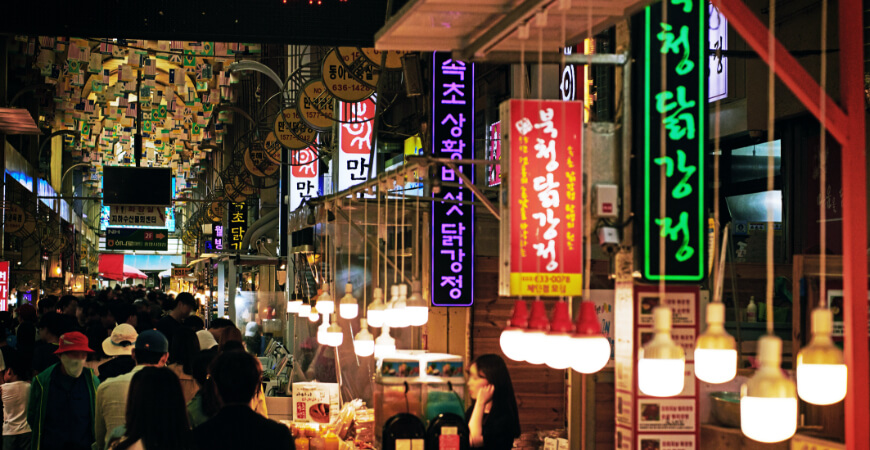 Sokcho Tourist Fish MarketLink to page
Sokcho Tourist Fish MarketLink to page
Sokcho Tourist Fish Market brings a variety of foods to enjoy. At dak gangjeong alley where over 10 dak gangjeong stores are flocked, a flood of local residents and tourists are crowding the area during the weekend and holiday. Sokcho Tourist Fish Market’s dak gangjeong alley has two nationally famous stores and each and every store has its unique flavor, so comparing the taste is a lot of fun.
Photo by (IR Studio Theme Product Team)-KTO- From the terminal
- 4.4 km 15 min
-
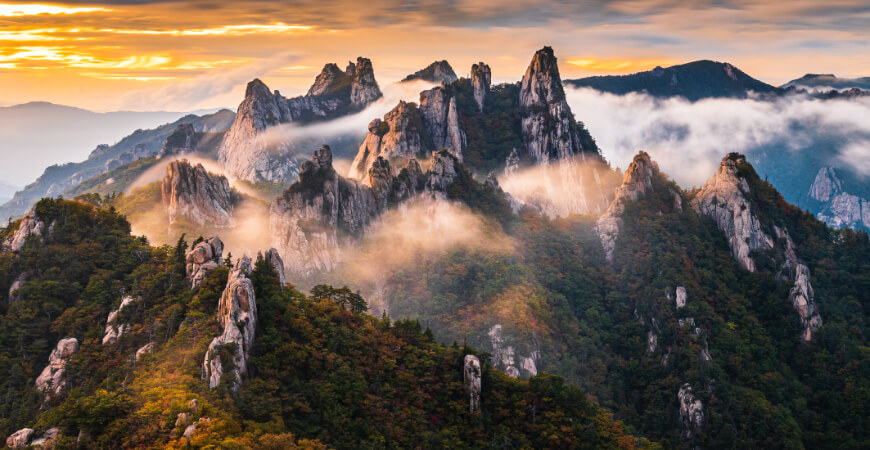 Seoraksan National ParkLink to page
Seoraksan National ParkLink to page
Seoraksan National Park is the first Korean site designated as biosphere reserve by UNESCO in 1982. In 2005, IUCN designated Seoraksan National Park as CategoryⅡ(National Park). The park is a repository of natural ecosystem where a host of animals and plants mingle together in a majestic nature. At Seoraksan National Park, visitors can get on cable car and reach Gwongeum-sung that offers an amazing bird’s eye view. In addition, at Shinheungsa Temple, visitors can enjoy Tongildae Buddha, the biggest bronze-made sitting Buddha stature, 14.6m high, 4.3m of sitting deck and 13m of sitting diameter.
Photo by (Lee Moyeon)-KTO- From the terminal
- 14.6 km 30 min
-
-
-
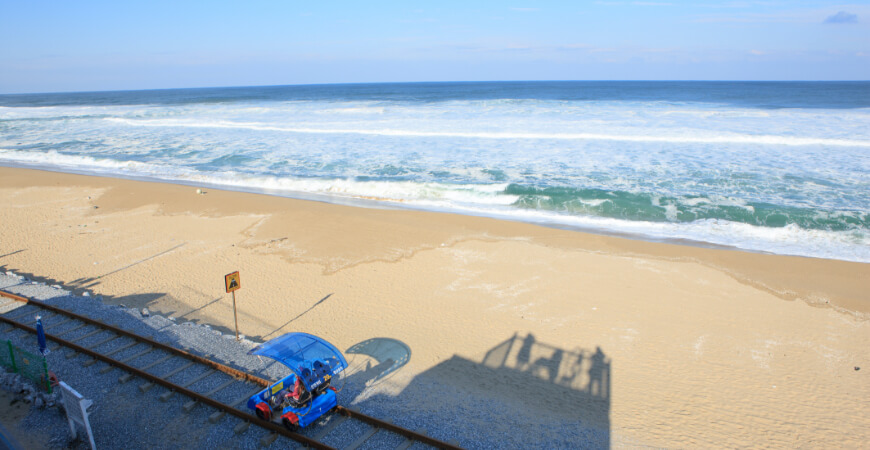 Jeongdongjin Rail BikeLink to page
Jeongdongjin Rail BikeLink to page
Jeongdongjin Rail Bike is the major landmark of Gangwondo tour as this leisure sports bring a host of tourists. Jeongdongjin Rail Bike starts from Jeongdongjin station, bringing a special memory of oceanic view and cool sea wind to couples and family tourists.
Photo by (Kim Jiho)-KTO- From the terminal
- 93.6 km 80 min
-
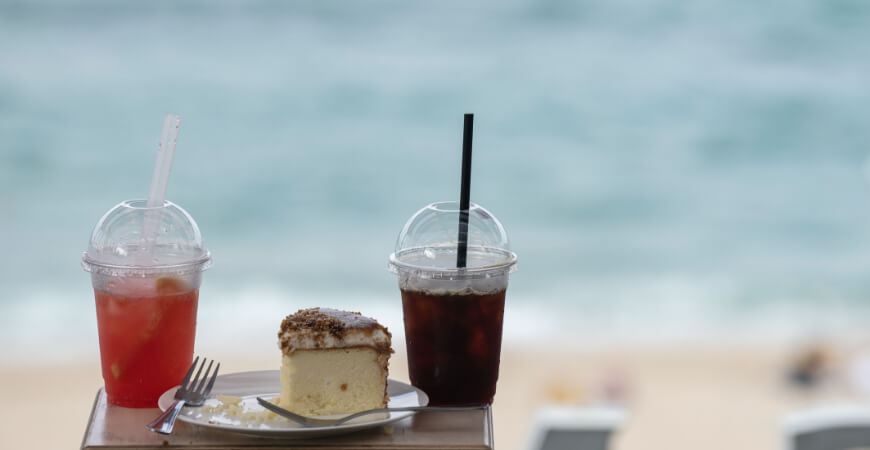 Anmok Beach Café StreetLink to page
Anmok Beach Café StreetLink to page
Gangneung Coffee Street at the port of Gangneung in Anmok is a place that brings nostalgia to those who grew up in Gangneung. From 1980s to 1990s, there used to be a flurry of coffee vending machine along the sea where the youth enjoyed chat and coffee. Now, coffee houses are established replacing the old vending machine, creating a renewed Gangneung coffee street. Marketing associating coffee with Han Song Jeong, landmark of tea ceremony at Unified Silla made Gangneung a city of coffee. The coffee street is famous not only among coffee enthusiasts but among couples and tourists.
Photo by (IR Studio Theme Product Team)-KTO- From the terminal
- 73.1 km 75 min
-
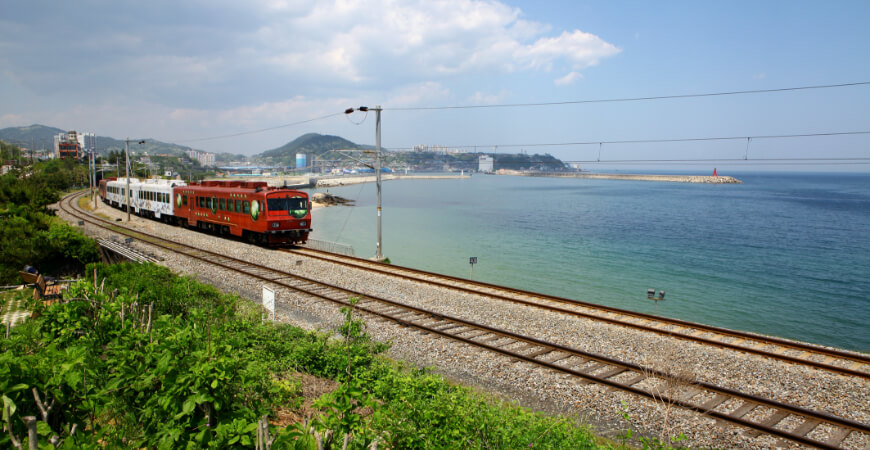 Sea TrainLink to page
Sea TrainLink to page
Sea Trail where the sea line of Gangneung, Donghae and Samcheok is connected consists of four carts including special room, regular room, train café and propose room. Special room and regular room are movie theater-shaped where passengers can have a brilliant landscape of east sea over the wide window while people can enjoy a variety of foods, local specialty and special souvenir at café cart. In addition, monitor installed at cabin and crew’s entertaining broadcasting deliver stories submitted by the passengers. Special events are run, which brings all the more fun to people.
Photo by (Lee Beonsu)-KTO- From the terminal
- 68.2 km 70 min
-
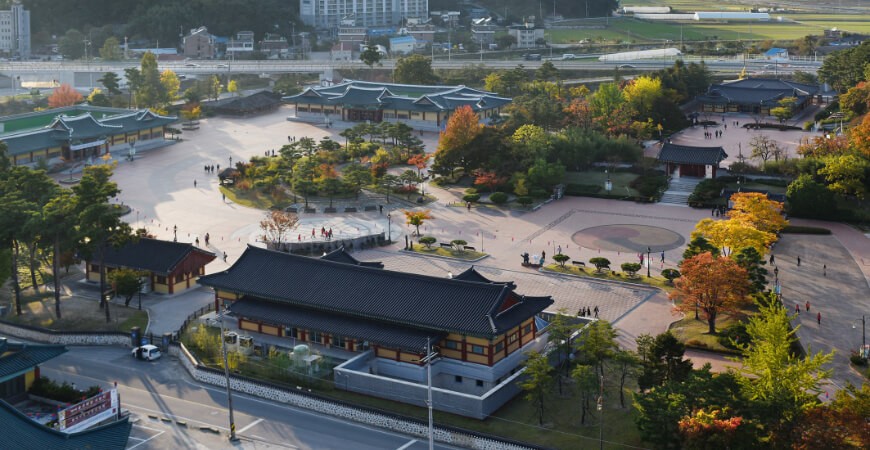 Ojukheon HouseLink to page
Ojukheon HouseLink to page
Ojukheon House is a monument that represents Gangneung famous as the place of Yulgok Yi I, a prominent Confucius scholar of Joseon Dynasty. Ojukheon House is the architecture built early Joseon. For high architectural value, Ojukheon House is the birthplace of Yulgok Yi, figure in 5,000 KRW bill and Sinsaimdang, figure in 50,000 KRW was designated as No.165 Treasure in 1963.
Photo by (IR Studio)-KTO- From the terminal
- 65.6 km 60 min
-
-
-
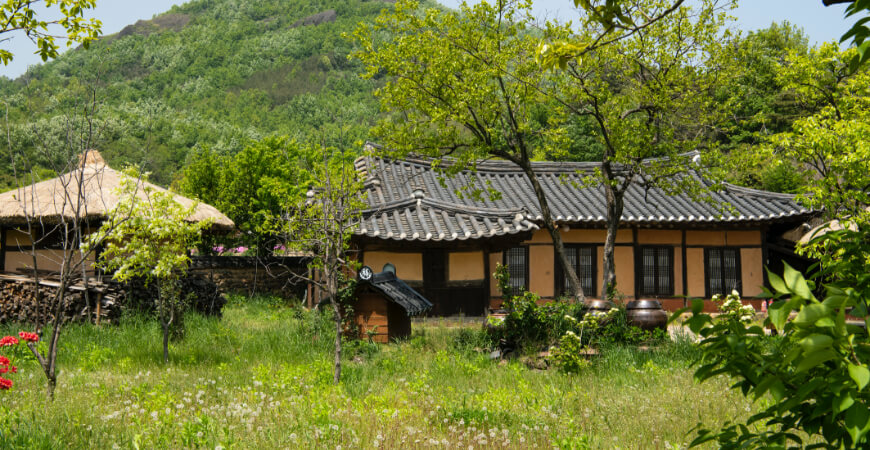 Wanggok VillageLink to page
Wanggok VillageLink to page
Wanggok Traditional Village located northern Songjiho is a must-visit place when you take a summer vacation in northern sea of Gangwondo. It is only 1.5km away from the beach, but you can not hear the sound of wave as the mountain consisting of five peaks surrounds the village. As such, during Korea War, most houses were able to manage to avoid being bombed. Up until now, traditional houses remained intact, well preserving the atmosphere of tradition.
Photo by (IR Studio Theme Product Team)-KTO- From the terminal
- 22.9 km 30 min
-
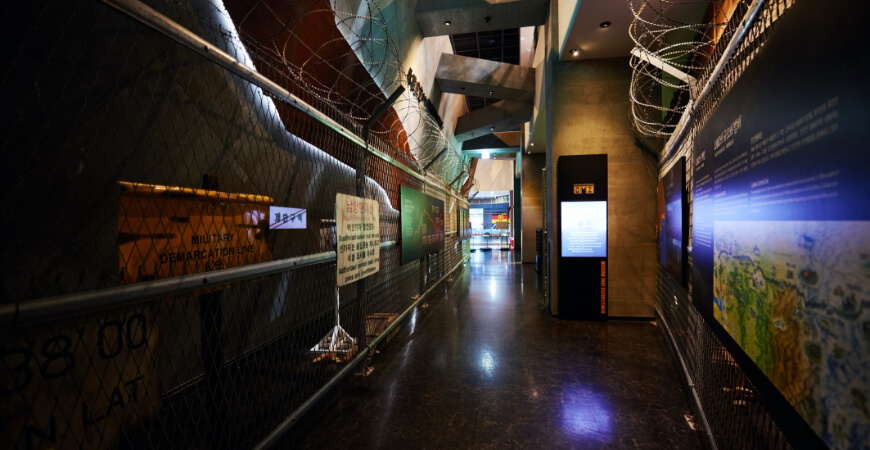 DMZ MuseumLink to page
DMZ MuseumLink to page
DMZ Museum is located within the Civilian Control Line close to the Military Demarcation Line, northernmost east sea that honors the national aspiration toward inter-Korean peace and stability. Through DMZ, symbol of the only remaining separated country on earth, the Museum delivers the before and after of 1950 Korea War, the meaning of the Military Demarcation Line created as a result of Armistice Agreement, the scar of separation, continued military clash and ecological environment which remained intact free of human touch in the form of exhibitions and video clip.
Photo by (IR Studio Theme Product Team)-KTO- From the terminal
- 53.1 km 60 min
-
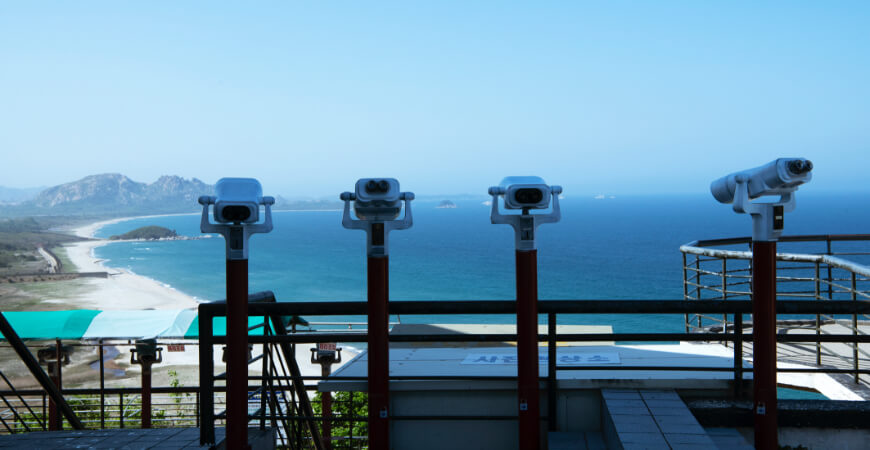 Goseong Unification ObservatoryLink to page
Goseong Unification ObservatoryLink to page
Standing at 70m high Goseong Unification Observatory where the Military Demarcation Line and Southern Limit Line meet, you can see Guseonbong of Mountain Geumgang and Haegeumgang up close. On sunny day, Oknyeobong, Chaehabong and Ilchulbong are visible. Military outpost standing between the Military Demarcation Line brings tension between the two Koreas. Annually, 1.5million tourists visit the Observatory where religious monument such as Saint Mary Statue that prays for refugees missing separated family in North Korea and those who wish unification, Mireuk Buddhist Statue and exhibitions for security education including Jeonjin Steel Tower, armored vehicles, tanks and planes are located. Under the feet at the Observatory, you can see North-South Korea connecting road at Donghaeseon that opened in December 2004 made Geumgang mountain travel a reality on land.
Photo by (IR Studio Theme Product Team)-KTO- From the terminal
- 53.8 km 65 min
-
